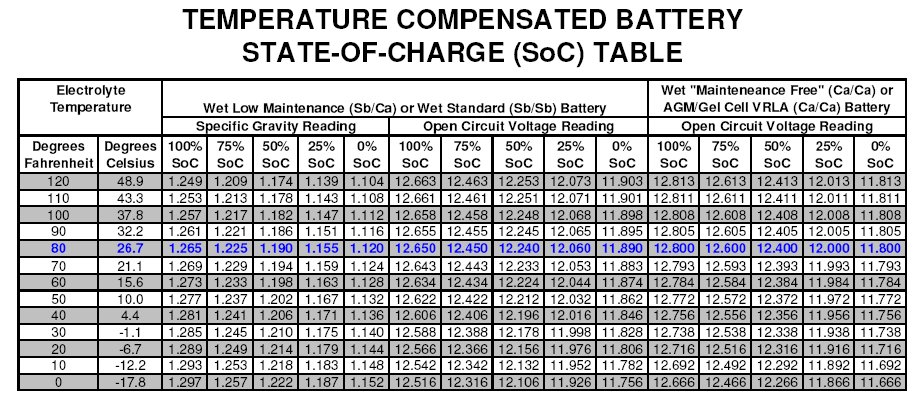Hey all -
So, nothing much good to report after spending a day at the cabin. System had a full week to charge up with ideal conditions (minus it being November) and I'm still far from a full charge. Here's a recap:
I got to the cabin just before dark and turned the inverter and breaker on. Like last weekend, I started losing volts rapidly. In just over an hour, I went from 27.2v (my Float setting) to 25.6 v, where I kind of stabilized. System is programmed to shut off at <25.4v, so not great. I was only using LED lighting during this. Around midnight I went back to check and with no load the voltage actually crept up a hair. Battery sense was reading "valid" with no faults or alarms. Last stat is from my Ah reading. Over the last 4-5 days, the system claimed to have received 33Ah from the panels.. if I'm reading that right.
And today:
While the sun was out today and during PWM phase, the CC was hitting much higher than it's programmed to. I have absorption set at 14.6v, and the CC was hovering around 29.9v any time the sun was shining. For some reason, this trips my inverter because it thinks it's getting more than 30v. Battery temp was around 55 degrees and the CC was reading 73.
Basically, I'm at a loss as to what to do. All these questions are flying around my brain while I try to protect my investment:
So, nothing much good to report after spending a day at the cabin. System had a full week to charge up with ideal conditions (minus it being November) and I'm still far from a full charge. Here's a recap:
- 4 panels at 780 total watts (24v)
- TriStar TS-45 (PWM) w/sense wires and RTS
- GoPower! GP-SW 2000/24
- 4 UB8Ds (12v) @250Ah, 500Ah total
I got to the cabin just before dark and turned the inverter and breaker on. Like last weekend, I started losing volts rapidly. In just over an hour, I went from 27.2v (my Float setting) to 25.6 v, where I kind of stabilized. System is programmed to shut off at <25.4v, so not great. I was only using LED lighting during this. Around midnight I went back to check and with no load the voltage actually crept up a hair. Battery sense was reading "valid" with no faults or alarms. Last stat is from my Ah reading. Over the last 4-5 days, the system claimed to have received 33Ah from the panels.. if I'm reading that right.
And today:
While the sun was out today and during PWM phase, the CC was hitting much higher than it's programmed to. I have absorption set at 14.6v, and the CC was hovering around 29.9v any time the sun was shining. For some reason, this trips my inverter because it thinks it's getting more than 30v. Battery temp was around 55 degrees and the CC was reading 73.
Basically, I'm at a loss as to what to do. All these questions are flying around my brain while I try to protect my investment:
- Is the higher-than-programmed CC voltage due to something the RTS or sense wires are triggering, and why would a feed with less than 30v trip an inverter that can handle 30v? The "battery" reading on the TS-45 is about .1 higher than the "battery sense" reading; for example, at one point today "sense" read 29.92 while the "battery" reading said 30.03. During that high PWM cycle, battery temp was reading 55 degrees and the CC was at 73.
- Is my main issue a battery bank too large for my PV? If I need more, I have two 12v panels not being used. Is it possible to series those and have them feed into the 24v system? These extra panels are HIGHTEC HS-M-B-150's which were donated about a year ago. Specs:
- PMax 150
- Vmpp 18.21
- Impp 8.20
- Open Circuit Voltage - 22.92
- Short Circuit Voltage - 8.76
- Does it make more sense to take one of the battery strings offline, especially given my really modest loads?
- Or, does it sound like I simply have bad batteries?



Comment